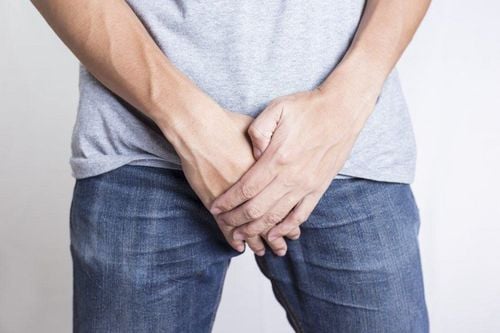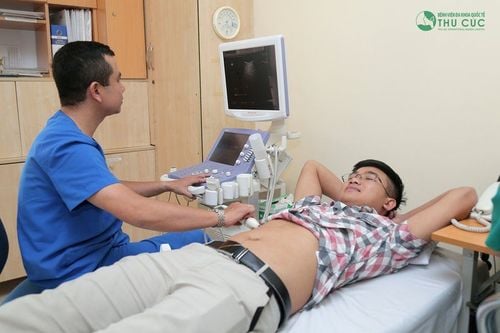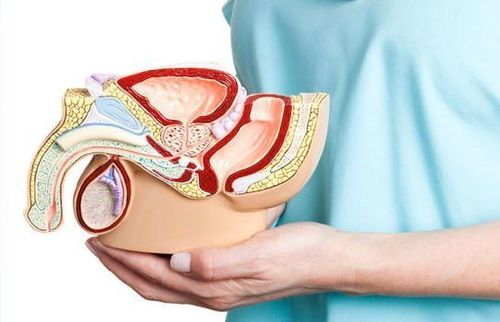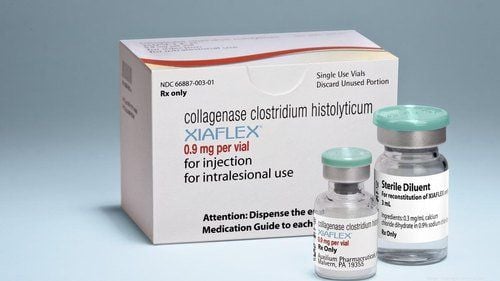This is an automatically translated article.
The article is professionally consulted by Master, Doctor Vo Thien Ngon - Urologist, Department of General Surgery, Vinmec Da Nang International General Hospital.The penis normally only curves slightly to the left or right when erect. However, if a curved penis is causing pain or difficulty in intercourse, then there is a high chance that you have curvature of the penis (Peyronie).
1. What is Penile Curvature (Peyronie)?
Peyronie's disease is a disease in which the penis becomes curved during erection. The disease occurs at any age but mainly in men aged > 40 years.2. Symptoms of Penile Curvature (Peyronie)
Symptoms of Peyronie's disease include:A hard lump or an area of thickening in the shaft of the penis The penis is curved during erection, usually upward Pain in the penis, especially during erection stiff Penis is shifted to the left or right Penis length or diameter is reduced

3. Is a curved penis normal or abnormal?
If the penis is slightly bent and it's not causing any discomfort, you don't need to see a doctor. However, in some cases, the curve of the penis can make it difficult, painful, or impossible to have sex. It could be a sign of curvature of the penis (Peyronie).Peyronie's disease left untreated can eventually lead to erectile dysfunction. Learn the symptoms of Peyronie's disease (above) for timely detection and treatment. Usually, the doctor will prescribe treatment for the penis with a curve of 30 degrees or more with problems in sexual intercourse.
The penis can also be bent due to trauma. The pain that occurs during an erection is caused by post-traumatic inflammation. The period of pain can last for many months and only subsides when the wound has healed and the scar tissue hardens.
4. Causes of Penile Curvature (Peyronie)
The cause of Peyronie's disease remains unclear. Many doctors believe that the curved penis is caused by the force encountered during sex and external trauma.Age is also a risk factor. Older men have a higher risk of Peyronie's disease than younger men.
In addition, Peyronie's disease is also influenced by genetics. If a male member of the family (grandfather, grandfather, father, uncle, ...) has Peyronie's disease, other members also have a higher chance of getting the disease than the general population.
5. Diagnosis of penile curvature (Peyronie)
Doctors usually diagnose Peyronie's disease by asking about symptoms, history of injury, and examining the penis. Some doctors measure the degree of penile curvature by injecting an ED unless you have a picture of an erect penis. You may also be asked to have an ultrasound of the penis.
6. Treatment of penile curvature (Peyronie)
6.1 Non-surgical treatments Non-surgical treatment is available to patients with mild penile curvature, with no pain or impairment of sexual function. In some cases, the disease goes away without any medical intervention. Non-surgical treatments include:Steroid injections: Drugs are injected into the affected area. The injection can cause some unwanted side effects. Extracorporeal shock wave therapy (ESWT): This is considered a targeted treatment, using an ultrasound scanner that shines directly on tumor areas or raised patches in the penis. This method is safe but has not been proven effective. 6.2 Surgical treatment Surgical treatment is applied to more serious cases. Indicated on those who have a lot of penile curvature, pain or affect sexual ability. Usually, doctors ask patients to continue to monitor the disease for at least 12 months before deciding to have surgery, because in many cases the disease improves without treatment.
The purpose of the surgical approach is to straighten the penis by:
Removal of tumors, grafting of skin patches or angioplasty. Implantation of a device that straightens the penis Acts on the area opposite the position. There is a tumor on the penis to prevent the penis from bending. This method can change the size of the penis.
Please dial HOTLINE for more information or register for an appointment HERE. Download MyVinmec app to make appointments faster and to manage your bookings easily.
Articles refer to sources: nhs.uk, health.harvard.edu, webmd.com













